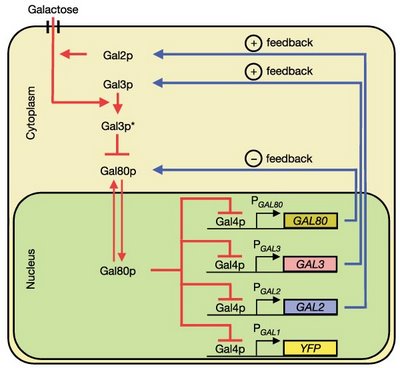One of the nice things about being at EMBL is that we can sneak into the ongoing conferences. This one is entitled: "From functional genomics to systems biology" and today was the first day.
I will just highlight some of the talks that I found most interesting. One was by a group leader here at EMBL, Lars Steinmetz who has been using tilling arrays (microarrays that try to cover the whole genome) in S. cerevisiae to look at the expression of non-coding regions in the genome. Although S. cerevisiae does not have the components for RNA interference, it does seem to have many non coding RNAs that are expressed. Many seem to be antisense to coding genes and also they could identify some of these non coding RNAs that were oscillating in a cell-cycle dependent manner. They are also using this arrays to look at the differences of expression of different strains and to study events of recombination.
The talk that I most enjoyed today was by Alexander van Oudenaarden. His group is studying small cellular circuits and cellular noise. He showed at lot of data on the galactose inducible promoter, detailed in this picture I took from their site :

He showed that the activity of the Gal4 promoter can be in two separable steady states and that this is history dependent. So yeast cells have memory in their metabolic state. He also showed that this state is inherited by the daughter cells and that they can manipulate the systems such that circuit can have a more or less stable memory. Also, not only the state is inherited but even the likelihood that the cells will switch state is also transmitted to the daughter cells. They studied this with flow cytometry to quantify single cell measurements and with microscopy to be able to follow the lineages. All of this was well integrated into predictive models of the system. Extra points for having a webpage on OpenWetWare :)
When will we be at a point were we can actually take high-throughput assays, combine them, make a model of modules that we find and have this detailed understanding of how they work ?